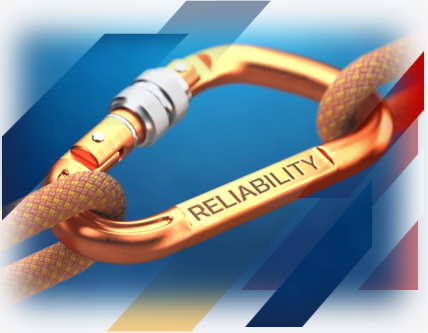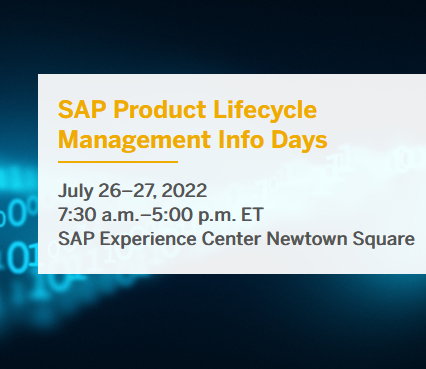BLOG: Improve Product Lifecycle Management by Applying Maintenance Reliability Principles
How Maintenance Reliability Principles Can Improve Product Lifecycle Management
by Nolan Reichkitzer I Gramont Consultant | April 2025
Reliability engineering and product lifecycle management (PLM) may seem like entirely separate disciplines, but they share an important connection. Reliability engineering focuses on ensuring systems and equipment operate efficiently and reliably over time, while PLM encompasses the entire journey of a product from design to retirement. Despite their different scopes, both disciplines aim to enhance efficiency and reduce costs by minimizing failures.
As someone who has worked on the plant floor as a reliability engineer and now consults on SAP PLM implementations, I see untapped potential in bridging these disciplines. By applying maintenance reliability principles to PLM strategies, organizations can drive efficiency, foster innovation, and better meet customer needs.
Core Principles of Maintenance Reliability
Maintenance reliability engineering focuses on keeping systems running smoothly by preventing failures and ensuring equipment operates as intended. Key principles include:
• Predictive Maintenance: Using data from sensors and historical trends to anticipate failures before they occur.
• Root Cause Analysis (RCA): Digging deep to uncover and address the underlying causes of equipment and operational failures.
• Reliability-Centered Maintenance (RCM): Strategically balancing preventive, predictive, and corrective maintenance to optimize performance and cost.
These principles ensure operational uptime, minimize costs, and enhance safety. However, their value extends far beyond maintenance departments. They also provide insights that can be applied to product lifecycle management.
Applying Reliability Principles to Product Lifecycle Management
Product lifecycle management encompasses the entire journey of a product from ideation to retirement. By integrating maintenance reliability insights, organizations can enhance every stage of this lifecycle. Here’s how:
• Operational Feedback: Maintenance data offers a wealth of information about product performance in real-world conditions. This feedback can inform design improvements, ensuring that future iterations are more reliable and durable.
• Material Selection: Identifying material failures through RCA can lead to better material choices in future designs, improving product durability and safety.
• Lifecycle Cost Analysis: Integrating RCM with PLM allows organizations to evaluate maintenance costs alongside product design choices, leading to more cost-effective decisions.
• Failure Mode and Effects Analysis (FMEA): This tool is widely used in many industries and can predict potential points of failure in a product during its design phase. Integrating FMEA into PLM processes can help prevent costly issues down the line.
Real-World Applications
Consider a consumer product manufacturing company struggling with frequent breakdowns of a packaging machine. Maintenance teams identify that a specific component consistently fails under high humidity. Using a collaboration tool, this data is shared with the design team, who redesign the component with materials better suited to the environment. The result? Reduced downtime, lower maintenance costs, and improved reliability of the machine.
Another example is leveraging predictive maintenance data to refine product specifications. If sensor data from machines indicates unanticipated wear patterns, the product design team can address these vulnerabilities in future versions.
Challenges and Opportunities
Implementing these strategies isn’t without challenges. One major hurdle is breaking down the barriers between manufacturing and product design teams, which often operate in separate silos and have different priorities. Additionally, these teams often work in different systems, so communication and data integration can be difficult.
However, the benefits outweigh the obstacles. SAP software solutions like SAP PLM, SAP Plant Maintenance, and SAP Asset Performance Management simplify team collaboration and foster an integrated environment. Organizations can gain a competitive advantage by embracing this holistic approach. The benefits are clear: reduced downtime, extended product life, and enhanced operational efficiency.
Connecting maintenance reliability principles with product lifecycle management unlocks a powerful synergy that can drive innovation and reduce costs. Gramont’s expertise in SAP solutions ensures a seamless integration of these strategies into your processes.































